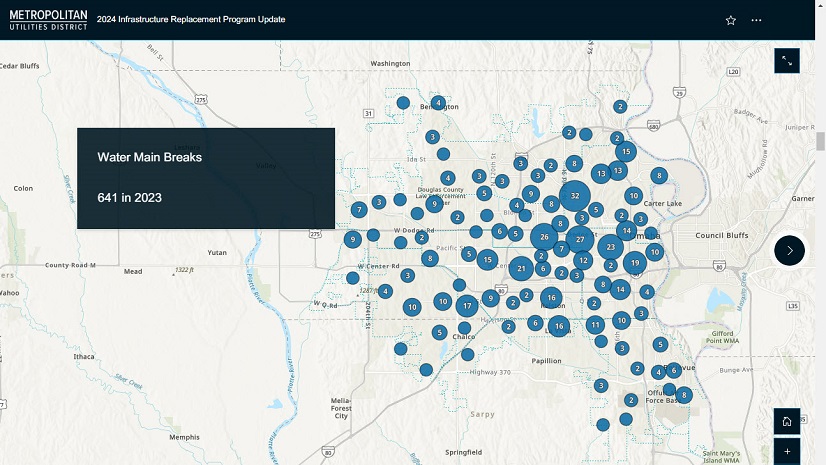Written by: Leslie Fountain and Victoria Phillips
Esri president, Jack Dangermond, emphasized an urgency to create a sustainable future using the power of community, GIS technology, and collaboration at the 2021 Esri User Conference. In this recap, we cover Chief Scientist of Esri, Dr. Dawn Wright’s thoughts on the message with special guests during UC Central Live, and keynotes from the Esri Science Symposium with Dr. Healy Hamilton.
UC Central Live Recap: Dr. Dawn Wright Talks with Dr. Rae Wynn-Grant about Highlights from the Day 1 — Plenary Session
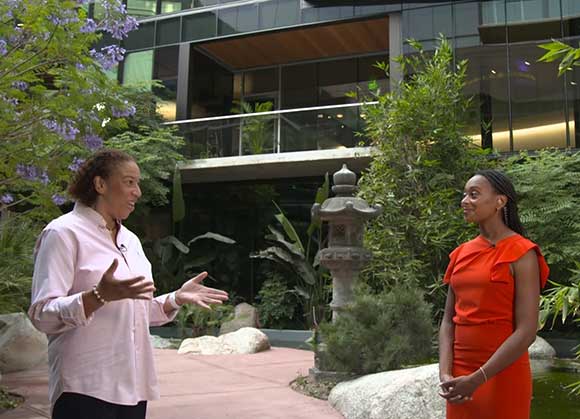
Dawn Wright and Dr. Rae Wynn-Grant welcomed attendees to another day at the Esri User Conference to introduce UC Central Live’s programming and discuss the highlights from Day 1—Plenary Session.
One of Wright’s highlights from Day1—Plenary Session was the theme of building community through collaboration that Dangermond introduced in the opening of the Esri User Conference.
“Technology is not the answer. It’s the way that we use technology, the way that we partner and support each other with technology,” said Wright. “Technology is that enabling force to get us to a sustainable future. I love this theme of GIS for a sustainable future, but not GIS alone.”
Wright also expressed how the concept of digital twins is exciting, considering climate change, the mobile work required of scientists to understand our world, and the impact it can have on forecasting and problem-solving.
Later in the program, Wright talked with Dr. Rae Wynn-Grant about her work at the Jack and Laura Dangermond Preserve in Southern California. Dr. Wynn-Grant and her team are studying the carnivore life on the preserve, and she is looking at the opportunity to develop a digital twin for the land and seascape in the area.
Learn more about the Dangermond Preserve in this ArcGIS StoryMap.
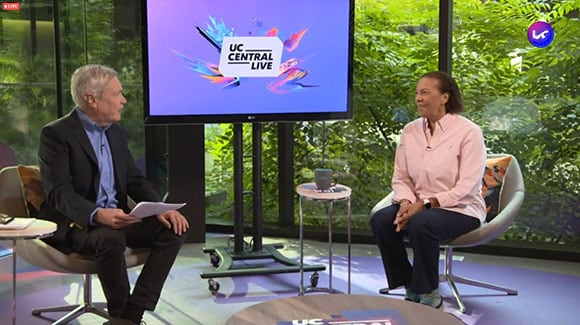
UC Central Live Recap: Day 2 Plenary Session — Discussion with Dr. Dawn Wright, James Fallows, and Jeffrey Sachs
Following the Plenary Session on Day 2, Wright sat with James Fallows, a writer, and journalist, to discuss highlights with Jeffrey Sachs, an economist. In the opening conversation, she talked about the interconnecting factors that bring us together as GIS professionals.
“One of the things that really struck me was the word one —the fact that there is only one ecosystem. It’s an ecosystem that is environmental and socioeconomic; it is industrial in terms of our different sectors, and it’s one ecosystem that our technology can work across to come up with a whole series of solutions,” said Wright.
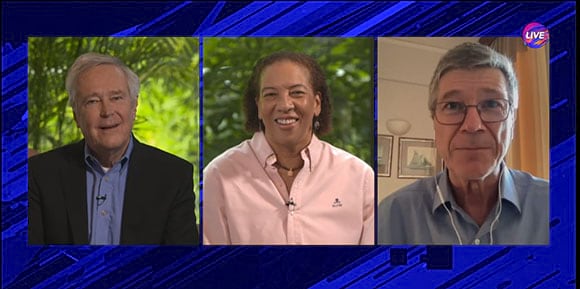
Sachs joined Fallows and Wright from Greece to talk about the need for sustainability that he’s seeing around the world. Sachs shared how areas like the Amazon basin are at “a tipping point” and talked about how maps have been the communication tool to illustrate the dire outlook for our climate and natural resources.
In response to addressing the current state of our climate, Wright encourages people to organize their data, start discussions, and facilitate action in the face of despair. “There is still time, but we must act now,” said Wright.
“We don’t lack for solutions, we don’t lack for the money to do it…we’ve just not found our way politically and our way to cooperate globally,” said Sachs. He said that we must create that sense of “oneness” in our work as GIS professionals to help people understand how we’re all interconnected.
Wright closed with a response to the question of the moral imperative and ethical responsibility behind communicating and sharing maps and data as we reach the critical environmental tipping point. To prevent misuse of GIS technology, care should be shown in education, enriching metadata, and establishing best practices and workflows for using GIS technology.
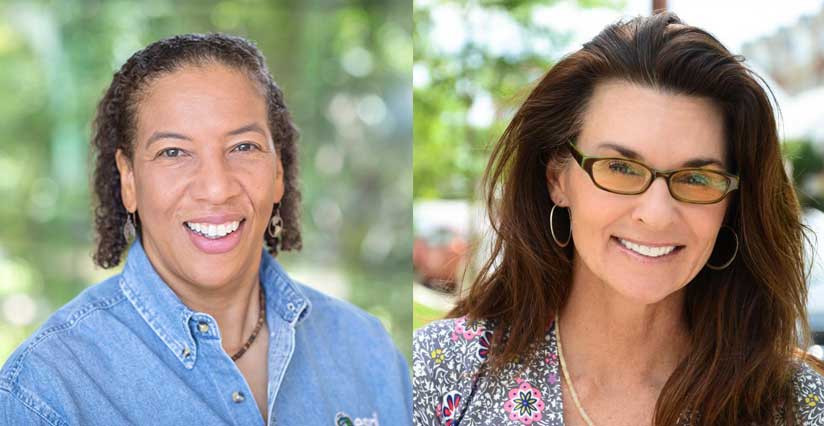
Esri Science Symposium Recap: Biodiversity and our role in the ecosystem.
In addition to her numerous UC Central Live appearances, Dawn Wright also hosted this year’s 6th annual Esri Science Symposium, which highlighted the importance of biodiversity and the critical need for humans to recognize our role in our ecosystem.
The symposium started with Dawn, welcoming an audience of over 3,000 and spotlighting Esri science resources available in the Esri Science portfolio, Esri Climate Action site, and GIS for Science website. Audience members then received a free copy of the ebook GIS for Science, vol. 3: Maps for Saving the Planet, which details how GIS can be applied to safeguard biodiversity.
After an introduction from Dawn, Dr. Healy Hamilton, chief scientist of NatureServe, a nonprofit that utilizes GIS to collect data about imperiled species, began with her keynote presentation.
Hamilton’s talk emphasized the importance of biodiversity. She detailed the story of individual species that are now extinct due to human causes and encouraged the audience to recognize the massive range of biodiversity we have on earth.
With the loss of unique species, we as humans lose the ability to learn, study, and potentially create from what we observe. Biomimicry, the field of mimicking nature to create solutions, saves time on research and development because it does not require inventing something new, but rather, building off solutions nature has already created. As the number of species decreases so does our ability to learn from their specialized traits.
Hamilton urged the audience to think of themselves as a part of the ecosystem stating, “Species shape their environment. Species modify, maintain, and create their landscape. We (as humans) have turned into ecosystem engineers, and this is the world that we have created. ”
“Species shape their environment. Species modify, maintain, and create their landscape. We (as humans) have turned into ecosystem engineers, and this is the world that we have created. “
Hamilton also spoke on the history of species cataloging and the methodology and processes NatureServe uses to create its Map of Biodiversity Importance. By mapping areas with high numbers of endangered species, community developers, citizens, and scientists can determine which places need the most critical and stringent environmental protection. Hamilton stated, “Maps democratize precision conservation and land protection. It’s more than a map.”
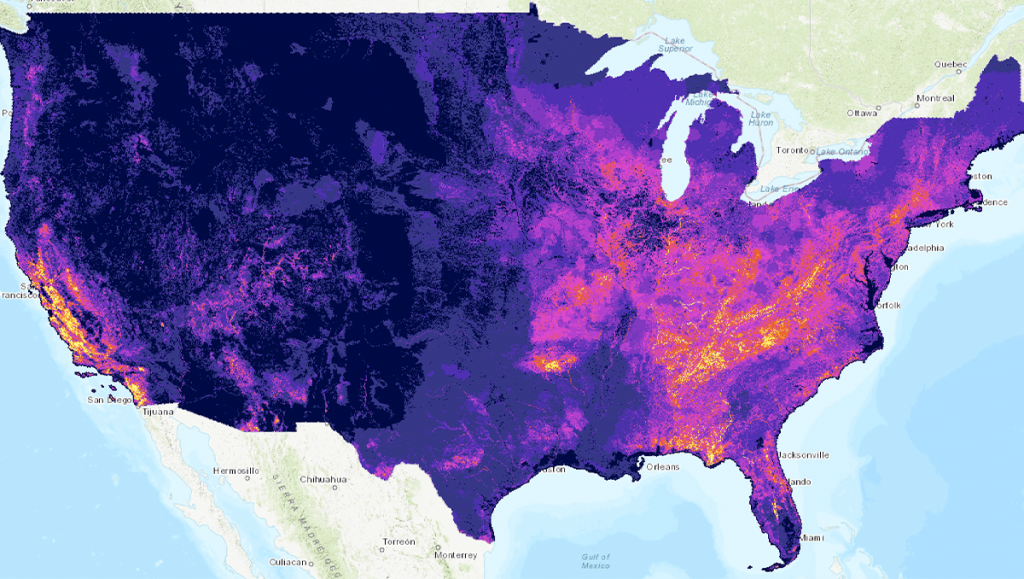
Hamilton’s Keynote empowered the audience to understand the importance of saving one species and expanded to show how we can apply GIS to help conserve and protect all species. Maps allow us to see the bigger picture. “Protect what’s left, restore what’s degraded,” stated Hamilton. “That is a spatially explicit set of directions. We need to understand where. The science of where and the science of conservation are interconnected.”
Have questions about biodiversity, conservation, or NatureServe? Post them on the Science page on Esri Community to be answered by Dr. Hamilton and Dr. Wright. Go to Esri Community
Access the 2021 User Conference session recordings, expo, and virtual map gallery by logging in with your ArcGIS Public Account.



